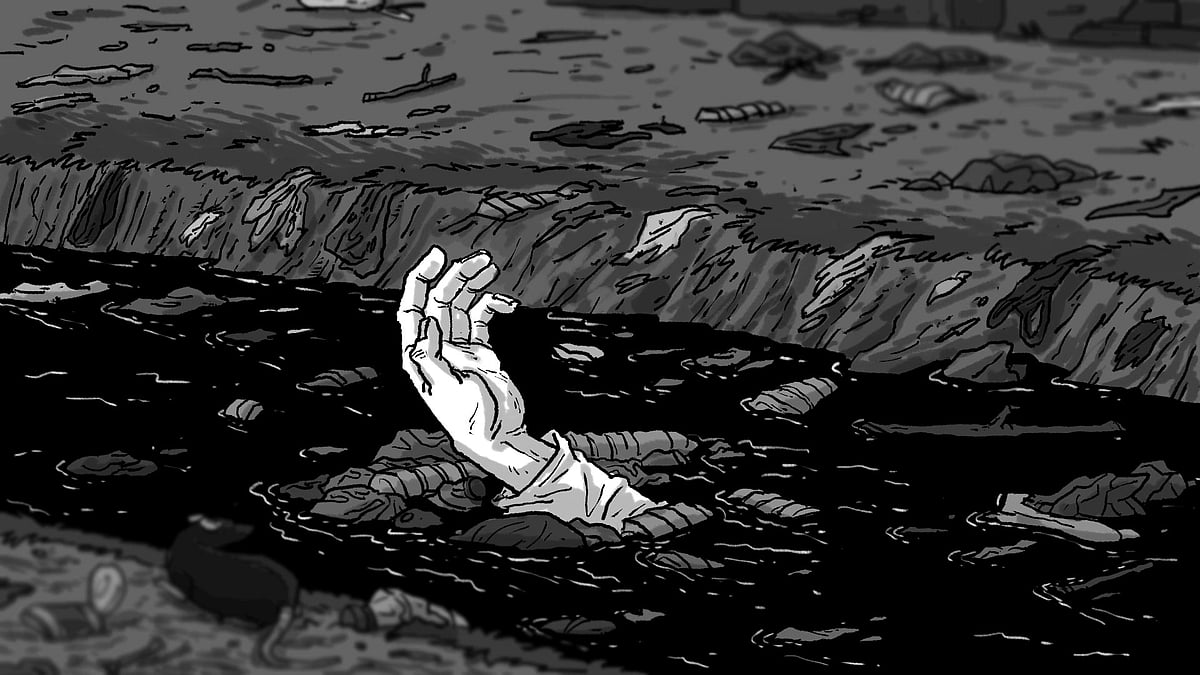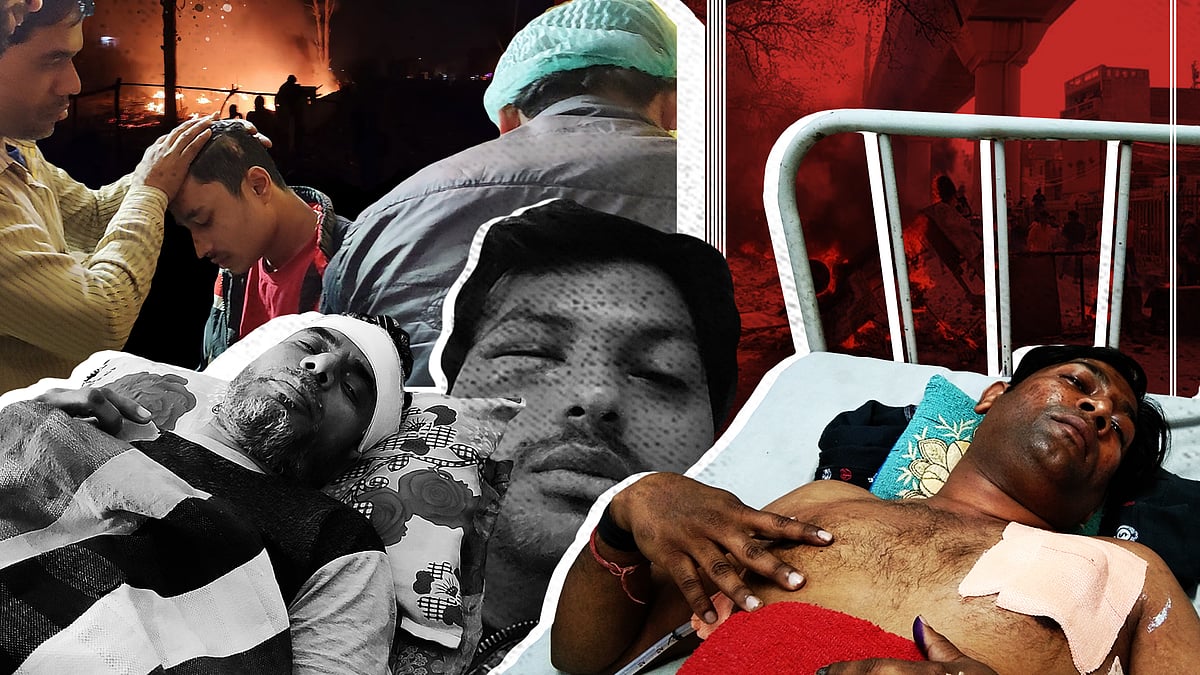Will victims of Delhi’s communal violence ever get justice?
Civil society needs to pursue justice for the victims to restore trust in the country’s democratic institutions, which are being subverted by the political establishment.
Through February, India was clamoring for the execution of the four rapists and murderers of Jyoti Singh, or Nirbhaya as she has come to be known. The same month, Dr MA Anwar’s small clinic, Al-Hind, in Delhi’s Mustafabad saw a grievously injured patient brought in whose legs had been ripped apart and the wound stabbed repeatedly with sharp and blunt objects.
The victim was a 24-year old man, one of hundreds of Muslims assaulted during violence perpetrated by a mob armed with iron rods, crowbars, lathis, metal pipes, knives, swords, chains, stones which marauded the streets of North East Delhi unchecked from February 24 to 29.
‘‘We saw many injuries in those days – pellet, bullet, stab, burn, acid wounds – but this young man’s condition haunts me still,” Anwar said as we sat in his clinic 12 days after the violence. “It wasn’t hatred, it was haivaniyat.” It was bestiality.
Al Hind is in a narrow alley in Mustafabad, a neighbourhood wracked by late February’s communal violence. Packed between small houses and shops, the clinic is equipped with only 15 beds. But they opened another floor, hurriedly covering it with cloth and plastic mats to take in 400-500 people who arrived during those five days, mostly injured people but some who sought shelter. “We were too overwhelmed to keep an exact count,” Anwar said.
So far, 53 people have been confirmed killed in the mob violence, mostly Muslim men, but also two elderly women. Two bodies, including that of a woman aged about 70, remain unidentified.
Many people are still missing. And hundreds of houses, shops and vehicles were damaged or burnt, wholly or partly.
In addition to the physical crimes of torture, assault, murder, property destruction, and arson, there is the extreme trauma caused by the terror unleashed on hundreds of families by armed mobs roaming the streets unchecked, chanting slogans like “Jai Shri Ram” and “Har Har Mahadev”, as well as dire threats like “Shiv Vihar jayenge, burqa wali layenge”, meaning, “We’ll go to Shiv Vihar and get a burqa-clad woman”, as per testimonies collected by the Youth for Human Rights.
Given that at least 16 mosques were vandalised and burnt, and religious belongings in Muslim homes specifically targeted, the Muslims in the area are terrified and distrustful.
Z, whom I met during my visit to the area, says his family moved to Delhi from Muzaffarnagar in the wake of communal violence in the western Uttar Pradesh district in 2013. He and his brother ran educational centres that have been burnt to the ground. ‘‘It was unbelievable what we saw and heard during those days, how does one go back to normal?’’
There are many men like them, and women and children, some of whom I met huddled at the Eidgah relief camp, who are unable to get on with their lives as before, unable to return to their homes or workplaces because of fear, shock and trauma.
Can these violence-afflicted of North East Delhi hope for justice, or for their stories to be heard by the government in an impartial manner? So that even though the dead cannot be brought back or the pain of their loss assuaged, at least a level of trust and respect is reinstated?
SN was one of 30 witnesses to record his testimony at the People’s Tribunal held on March 16 by Anhad, an organisation that works with victims of communal violence. He said he saw his brother at home before leaving for work and received a call an hour later that his younger sibling had been shot in the leg. He bled to death on the way to hospital in an autorickshaw.
‘‘It is not possible to forget or forgive, but we wish for no retaliatory harm. All we want is for our stories, from both communities, to be fairly and honestly presented in a just court of law,’’ he added.
This was a commonly echoed sentiment by the victims who testified at the tribunal. However, it seems unlikely.
That’s because the political leadership at the Centre has orchestrated a totally different spin to the events. The report it officially endorses is Delhi Riots 2020: Report from Ground Zero, based on a one-day visit by its fact-finding team comprising a Supreme Court lawyer and four Delhi University faculty on February 29.
The report concludes that the Delhi “riots” were a culmination of events that began on December 15, with the anti-CAA protests at Jamia Milia University which moved on to Aligarh Muslim University and then Shaheen Bagh before finally fanning out to Muslim-dominated areas of North East Delhi, where ‘‘Jihadi mobs’’ ran riot, indulging in unabated violence for five days. All this was funded and organised by ‘‘Urban Naxal-Jihadi outfits’’ and ‘‘Universities’’.
The report brands AAP legislator Amanatullah Khan raising questions on the controversial Citizenship Amendment Act “hate speech”, but whitewashes BJP leader Kapil Mishra’s infamous hate speech as merely “asking” the police to clear public spaces of protesters.
It claims that guerilla warfare was adopted in North East Delhi: ‘‘Fast armed action and retreat. This has been seen in JNU and in the Delhi Riots 2020. Rioters with covered faces wrecked maximum damage.’’
The report also absolves the Delhi police of negligence. It notes ‘‘with anguish the attempts by national and international media organizations as well as responsible organizations like the Delhi Commission for Minorities to make statements (as reported in the media) on the selected targeting of Muslim population in riot hit areas and on the alleged inefficiency of the Police”.
It found that Muslim casualties were mostly in Muslim-dominated areas and Hindu casulaties in Hindu areas, but the cases covered in the report are pre-dominantly of Hindu families and workplaces.
Their fact-finding further found that the population profile in the region had changed due to the influx of ‘radicalised’’ persons from Uttar Pradesh (as ‘‘some gallis open out into what is technically Uttar Pradesh), who ‘‘have no deep links and permanent interests in the area and formed the bulk of dharna protesters at anti-CAA protest sites”.
Additionally, the ‘‘Far left Urban Naxal groups that were helping this UP-influx’’ share “links across the border: ISIS type of brutal killings point towards links across the border. Intelligence Bureau official Ankit Sharma’s post mortem indicates that he was stabbed over 400 times before and after his death.’’
The narrative woven by the Ground Zero Report has since been refuted by extensive findings from the ground by human rights groups like Karwan e Mohabbat, established by Harsh Mander, which has since put up video documentation showing the violence was targeted at Muslims primarily as well as the Delhi police’s shockingly partisan behaviour before, during and after the violence.
The Polis Project, a hybrid research and journalism organization, also published a report, An Account of Fear & Impunity: A Preliminary Fact Finding Report on Communally-Targeted Violence in NE Delhi, February 2020, researched by the Youth for Human Rights Documentation.
Each corroborates that between February 23 and 29, the Delhi police took no preemptive measures to dispel an imminent conflagration; refused to respond to calls for help; actively directed and guided Hindu mobs to Muslim homes, workplaces and mosques; indulged in custodial torture; blocked medical aid and media coverage. Since then, it has been consistently unhelpful in registering FIRs or searching for evidence.
Disregarding the compelling evidence offered by these groups, the BJP government transferred Judge S Muralidhar from the Delhi High Court overnight after he questioned the police’s inaction in booking three BJP leaders for hate speeches that were recorded on camera.
The Special Investigation Team set up by the government to look into the serious lapses of the police during the violence too challenges credibility. One, it is headed by two police officers. Two, both these officers, Deputy Commissioner Rajesh Deo and Deputy Commissioner (Crime) Joy Tirkey, have been under the scanner for their roles in objectively reporting on the JNU attack by masked miscreants and the police’s attack on Jamia Millia.
Recognising the intent of the government to subvert facts and create a false narrative of the North East Delhi violence, as well as Delhi police’s continuing resistance to lodging FIRs of victims, Anhad organised a ‘People’s Tribunal on Delhi Carnage: Anatomy, Arson, Relief & Road Ahead’ on March 16 with a jury consisting of two retired judges and civil society members. Thirty victims, health officials, lawyers and activists recorded testimonies of their experiences during and in the immediate aftermath of the violence.
And this remains the only possible hope for the violence-afflicted: civil society organisations and their ability to build a strong public pressure on the government to refrain from blatant interference in government institutions.
The perpetrators of the heinous attack on Jyoti Singh in 2012 were finally hanged on March 20, 2020. Will the mobs of men who unleashed terror, brutally tortured, maimed and killed in February be brought to justice?
Some names have been withheld to protect identities.
 Delhi carnage: The story of one mob, two drains, and five murders
Delhi carnage: The story of one mob, two drains, and five murders A tale of two hospitals overwhelmed by Delhi’s communal carnage
A tale of two hospitals overwhelmed by Delhi’s communal carnage